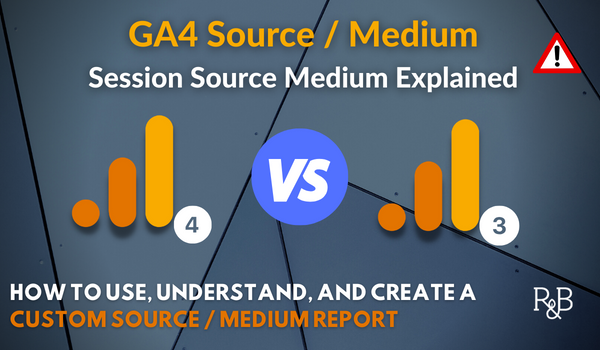The Function of Secondary Dimensions in Google Analytics: Definition and Insights for Advanced Data Evaluation
The Function of Secondary Dimensions in Google Analytics: Definition and Insights for Advanced Data Evaluation
Blog Article
Introducing the Effect of Additional Measurement in Google Analytics on Information Analysis and Insights
In the world of data analytics, the application of second measurements within Google Analytics has arised as a crucial device for removing deeper understandings and unraveling complex patterns that may otherwise continue to be obscured. By peeling back the layers of primary information sets, secondary dimensions use a nuanced perspective that enriches the understanding of individual actions, web site efficiency, and the effectiveness of advertising and marketing techniques. Nevertheless, real impact and untapped potential of secondary measurements are usually taken too lightly, outweighed by the allure of key metrics. As we browse with the complex landscape of data analysis, the relevance of secondary measurements becomes progressively apparent, clarifying important details that hold the trick to notified decision-making and calculated optimizations.
Discovering the Idea of Second Dimensions
Second dimensions in Google Analytics provide extra insights by enabling individuals to assess key data along with an additional feature. This attribute enables a much more comprehensive understanding of the primary information by adding an additional layer of information for evaluation. By integrating second measurements, customers can delve much deeper into the information and discover beneficial correlations that might otherwise go unnoticed. By combining the primary data of web site web traffic with secondary measurements like demographics or behavior, online marketers can acquire a more thorough view of their target market and tailor their techniques appropriately.
Understanding the concept of second measurements is essential for maximizing the possibility of Google Analytics. It allows users to section information effectively, determine patterns, and make notified choices based on an extra full photo of their analytics data. By exploring the different secondary measurements readily available in Google Analytics, users can unlock new understandings and maximize their electronic advertising and marketing efforts. Fundamentally, additional dimensions offer as a powerful device for boosting data analysis and driving actionable outcomes.
Enhancing Information Interpretation With Additional Measurements
Having actually developed the foundational understanding of second measurements in Google Analytics and their pivotal role in data evaluation, the focus currently shifts in the direction of leveraging these additional features to boost the analysis of analytics information (what is a secondary dimension in google analytics). By integrating additional measurements right into information evaluation, experts can get much deeper understandings into customer actions, internet site performance, and advertising and marketing efficiency

Additionally, second measurements aid in contextualizing key information metrics by providing extra layers of info. This contextualization aids in comprehending the 'why' behind the data trends, assisting experts make informed optimizations and choices to enhance overall efficiency. Eventually, integrating additional measurements enhances the data analysis procedure, causing even more tactical actions and meaningful understandings.
Revealing Hidden Insights Via Secondary Dimensions
Checking out the midsts of analytics information with secondary dimensions discloses important insights that would certainly otherwise continue to be obscured. By integrating second dimensions find out here in Google Analytics, services can discover covert patterns, fads, and relationships that provide a more extensive understanding of customer behavior and site performance. These extra layers of data enable analysts to dig much deeper right into the primary dimensions, such as web traffic resources or landing web pages, and acquire an extra nuanced perspective on how different variables connect with each other.
With the use of secondary measurements, analysts can segment and contrast data throughout various measurements, allowing them to identify certain factors that influence individual interaction, conversion prices, and overall success metrics. By coupling the main dimension of 'gadget classification' with the second measurement of 'age group,' marketing professionals can determine which age demographics like accessing the internet site with mobile devices versus desktop computers.
Leveraging Additional Measurements for Actionable Analytics
Structure upon the understandings unveiled through second dimensions in Google Analytics, companies can currently harness this enriched information landscape to drive actionable analytics and strategic decision-making. By leveraging secondary measurements, companies can dig deeper right into their information to extract valuable patterns, patterns, and correlations that might have formerly gone unnoticed. This much deeper level of evaluation allows businesses to gain a more thorough understanding of individual habits, campaign performance, and overall site performance.
One secret advantage of making use of secondary measurements for workable analytics is the ability to segment data based upon particular criteria. This division enables organizations to customize their strategies and projects to various audience teams, resulting in a lot more targeted and efficient advertising and marketing initiatives - what is a secondary dimension in google analytics. Additionally, second dimensions provide an even more alternative view of individual interactions, enabling services to enhance their internet site web content, design, and general user experience
Optimizing Decision-Making With Secondary Measurements
To boost tactical decision-making in analytics, leveraging second dimensions in Google Analytics can provide a more nuanced point of view on user actions and campaign efficiency. By including second dimensions into data analysis, services can dig much deeper right into the specifics of their website visitors' communications and interaction patterns. This extra layer of details permits for a more extensive understanding of exactly how various variables, such as demographics, gadgets, or website traffic resources, effect key performance signs.

Verdict
To conclude, using secondary dimensions in Google Analytics plays a vital duty in improving data evaluation and discovering covert insights. By exploring this idea, one can obtain a deeper understanding of customer habits and make notified choices based on actionable analytics. Leveraging secondary dimensions permits an extra detailed interpretation of data and optimizes the efficiency of decision-making procedures.

Report this page